Covid-19 has upended our lives but more importantly, perhaps, that of children and youth who are affected educationally, socially, economically, politically, and culturally, mostly through decisions and policies not of their making and not necessarily with them in mind.
First, their education was affected by the closing of schools. Then their social life became more isolated because of more lockdowns and closings of playgrounds for the younger children and collective activities and hang-outs for older youth. As parents and caregivers lost jobs and income, an increasing number experiences food concerns as well as reliable housing, gas, and electricity. Decisions made for them on a local or national political level are all too often made with ulterior motives to the detriment of the children and youth. And finally one of the most precious rights of the children in the Convention of the Right for the child, article 31—the right to leisure and play and to participate fully in cultural life— was affected by the closing of all cultural institutions, except when mediated through a screen.
The international TYA community was, of course, also at a loss. As Sue Giles, Vice President of ASSITEJ, also mentioned in the last newsletter, the ASSITEJ Executive Board tentatively started to have zoom meetings somehow bridging 16 time zones. We started to organize “coffee sessions,” which are enthusiastically embraced and continued by the national centers, most recently a 50 member coffee session in Brazil. And while much discussion continues to include how artists, researchers, companies, and festivals were affected, we also talked about the target audiences, children and youth globally.
For the past six years or so ASSITEJ already had been discussing the various ways children and youth might be able to participate in all forms of theatre for young audiences performance, including process, policy, training, and engagement. Article 12 and 13 of the Convention of the Rights of the Child, the CRC, where the child’s freedom of expression and involvement in policy making is stated, and Article 31 which guarantees the right to participate in cultural activities have been especially important for ASSITEJ and its advocacy. But in these unprecedented times, was merely pointing to these articles enough? What else could we do? During one of the coffee sessions in June 2020, Vicky Ireland of IIAN, the International Inclusion Arts Network, offered the Children’s Art Manifesto created by the UK charity, Action for Children’s Arts (ACA).
This became a catalyst, taken up with enthusiasm in subsequent summer coffee sessions in an effort to create the ASSITEJ International Manifesto with input from around the world. Finalized by the ASSITEJ EC with input from IIAN and translated in as many languages as possible it is now on the ASSITEJ website for everyone’s use.
We, at ASSITEJ have made a commitment with this manifesto, and we hope you will all take it as a model to adapt to your regional and cultural-political circumstances if necessary, and use it to your advantage and spread the word. One great example of advocacy, is of 13-year-old Emmerson Sutton from the UK who introduced the manifesto at the Council of Europe in September 2020, arguing for involvement of children and youth in policy and decision making by putting himself as an example. In his words, since he started attending boards as a nine year old: “as an advisor I have frequently suggested alternative ideas [. . .] to consider. Having young representation on panels and boards ensures creative longevity.” As a field constructed by adults, we all too often have gone over the heads of children and youth, talking at and to them, not with them. Hearing, without listening. It is time for a change.




